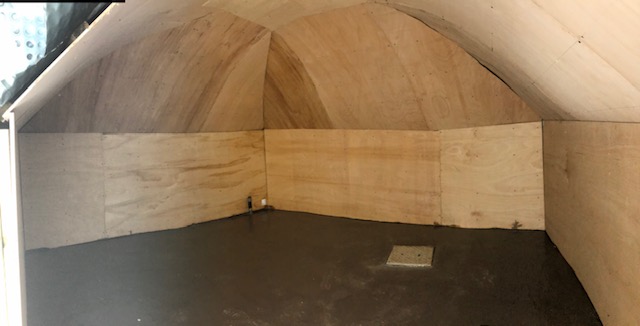Blog
Basement Tanking FAQs

When it comes to waterproofing a cellar or basement, a tanking system may be installed. This is a necessary measure for structures that are beneath ground level as the build-up of groundwater around the walls can be devastating. The water can seep into walls which can either result in flooding or a weakened structure.
Structural stability is of the utmost importance for any building, which is why the process of basement tanking is absolutely essential. In its absence, not only is said stability at risk, but your property will be more prone to damp, mould, and flooding.
With this being said, it’s likely that you’re left with some questions regarding the process of basement tanking. Below are some of the most frequently asked questions surrounding basement tanking.
What is Tanking?
Tanking refers to structural waterproofing that is administered to localised areas or used to damp proof cellars and basements. This can be applied to floors and walls alike to act as a damp barrier. Ultimately, a tanking system is installed to act as a preventative measure against water affecting the internal décor and finishes. The best way to imagine the outcome is to think of a fish tank being a tanking system.
What is Type A Waterproofing?
Type A waterproofing, otherwise known as cementitious tanking, is the most common waterproofing solution. This refers to a process of creating a barrier that will stand in the way of water entering the property in the first place. This can however increase the external pressure applied to the walls and floor.
What is Type C Waterproofing?
Type C waterproofing, otherwise known as membrane sealed tanking or a water management system, refers to a membrane being implemented to trap water ahead of draining & pumping it away. This approach allows water through the walls and floor as it is then managed internally, it does not increase external wall or floor pressure.
How is a Type A Waterproofing Installed?
Firstly, the internal walls need to be prepared by stripping them back to their base material ahead of new materials being applied. These new materials include cement render splatter coat and sand. Following this, multi-coat render will be applied before everything is combined with a waterproofing agent. Agents will vary from project to project, including epoxy resins, slurries, and Sika additives.
How is Type C Waterproofing Installed?
Once again, the walls will need to be cleared. This process includes the removal of organic, friable, and loose material. All plumbing and piping will be sealed to the membrane, as this will guarantee that nothing is disturbed within the process. Once this has been secured, perimeter channels will be fitted around the walls’ base, as well as the floor. This will lead to a sump and pump system which is responsible for carrying water away from the building and into an external drainage system.
Type C waterproofing will be finished with plasterboard to give you the means of decorating your basement at the end of the waterproofing process.
How Does Type A Waterproofing Work?
The jointing sealants and render that come with type A are implemented to form a watertight seal to prevent water from seeping into the property. Typically, this will be finished with skimmed plaster, much like type C waterproofing, but it can also be left bare as a rustic sponge finish.
How Does Type C Waterproofing Work?
A type C waterproofing system is designed to channel ingressing water away from your property towards exterior drains. This is to remove the water from the property once it’s already inside, rather than preventing it from entering the basement.
When is Type A Waterproofing Suitable?
Type A waterproofing is typically the most suitable waterproofing solution unless the walls are already unstable or fragile. If your basement is situated within an area of high groundwater levels, type C might be a more viable solution. Ultimately, Type A waterproofing will be used in any instance where the building’s integrity isn’t already being threatened as the system is only as good as the substrate/structure that is applied to.
When is Type C Waterproofing Suitable?
Type C waterproofing is the most reliable form of basement tanking; however, it can be expensive. It puts no strain on the structural integrity of the building and is the best equipped to handle unpredictable water levels. As well as this, the process produces less waste and results in minimal disruption. With this being said, it’s not always the most cost-effective solution, meaning that you should always get your property surveyed to determine the best course of action for your property.
How Much Does Basement Tanking Cost?
This is a difficult question to answer as it’s very dependent on the method being used, as well as the state of the property. Therefore, Garratts Damp & Timber Ltd offers a site survey to provide you with a no obligation quote.
Tank Your Basement with Garratts Damp & Timber Ltd
Here at Garratts Damp & Timber, we have a multitude of water-in-basement solutions. From basement waterproofing systems to other forms of basement repair, you’ll struggle to find better-equipped basement waterproofing specialists elsewhere. If you have concerns about the integrity of your basement, contact us today to book your site survey.
Archived Articles
Recent
-
18 Mar 2024
How to Get Rid of Damp in Bedrooms
While it may seem more logical that kitchens and bathrooms are more prone to damp, it may be surprising for…
-
13 Nov 2023
Benefits of Tanking Your Basement
While basements have been a staple of home construction in multiple countries, they are still a relatively new concept in…
-
13 Nov 2023
Taking Action on Fixing Damp
Damp is a widespread problem in properties across the UK; however, this doesn’t stop the fact that it’s a serious…







